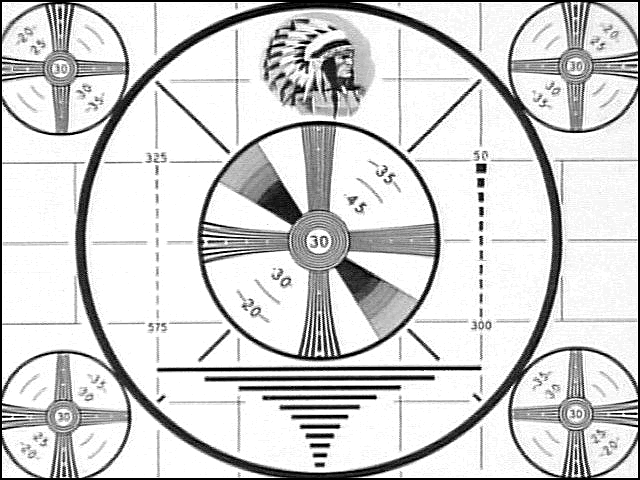The entertainment industry learned a long time ago that the way to appeal to the most people is to embrace ambiguity.
Ambiguity permits each consumer to put their own meaning on the art they buy; on music, paintings, theater, books, movies, shows, personalities, and stars.
Ambiguity, when combined with strictly enforced copyright laws — like those of the United States — can help establish a large paying audience, huge money, and wide-spread exposure and influence.

People like to feel they are part of something bigger than themselves. Ambiguity promotes mass participation in cultural processes. This mass participation can alleviate the ennui of alienation for many people.

Elvis Presley sang, you ain’t nothing but a hound dog. What did he mean by it? No one knows, and everyone knows.
The same is true with Bob Dylan who sang, Hey Mr. Tambourine man, play a song for me. In the jingle-jangle morning I’ll come following you. No one knows what he was singing about. Yet everyone can tell you what he meant.
The ambiguity of these two artists — one from the nineteen-fifties, one from the nineteen-sixties — permitted both to accumulate the largest fan bases ever, until the Beatles.

The Beatles established an ambiguous sexual identity by wearing their hair long — unusual at the time. They deluged their fans with ambiguous lyrics such as, yeah, you’ve got that something, I think you’ll understand, When I’ll say that something, I wanna hold your hand… and hey Jude, don’t make it bad, take a sad song and make it better. No one knows for sure what they meant, but everyone knows what those lyrics meant to themselves when they first heard them.

Jesus presents ambiguities about himself which have attracted the largest following of worshippers in world history. The most obvious ambiguity is the concept of the Trinity. Is Jesus God, or not? No one knows. Everyone knows.

The concept of the Trinity presents the central ambiguity of Christianity. It has drawn the attention of a spiritually hungry world for two thousand years. It confounds us with a dilemma of logic and meaning which to this day fuels the faith-wars of Christians who, in their quest for certainty, have segregated themselves into over 40,000 denominations.
Every attempt to define the Trinity, to remove its ambiguity and establish certainty, seems to result in a new denomination, a new religion.

Of course, many other ambiguities in the Bible have spawned controversies. Abortion isn’t mentioned in the Bible — and homosexuality is barely mentioned — yet both have divided countless churches. Gifts of the Holy Spirit — which are discussed at length in the Bible and should be non-controversial to believers — have divided churches. Some denominations discount gifts altogether, in contradiction to Scripture.
In the 21st century, those Christians who detest ambiguity and worship certainty war with one another in a kind of theater of the absurd. 40,000 denominations?
Really?
Instead of embracing a small amount of ambiguity to unify Christians, a few leaders advocate from time to time certainties of thought and Bible interpretation which divide the faithful. Unity is the last thing these modern Christians seem to want. They lust for certainty.

Certainty is not biblical, it’s not Christian, it’s not even Jesus. Jesus didn’t stone the woman caught having sex with her married boyfriend, though the logic of the law demanded it. He reasoned with her, encouraged her, and forgave her. He wasn’t logical. He wasn’t dogmatic. He admonished the woman and gave her hope. He acted with all the stupidity and uncertainty of true love, based on a relationship with a messy human being who would never be certain of anything.
The most unambiguous statement Jesus made was this: Here I am! I stand at the door and knock. If anyone hears my voice and opens the door, I will come in and eat with that person, and they with me.
No one knows for sure what Jesus was talking about when he made this statement. Yet everyone seems to know for sure what he meant. As unambiguous as the statement is, it can’t be literally true today.
No modern person has ever opened their front door and found Jesus standing on the front porch. Not one. Jesus’s meaning is uncertain. To different people, his words mean different things.
For Jesus, his statement had a meaning known to him, but it seems reasonable that his meaning might have nuances depending on the specific person he was talking to. And Jesus was talking to a lot of people, it turned out.

The Bible plainly says that we are saved by faith. But no one has perfect faith.
So how much faith does it take to get into Heaven?
Jesus said the amount of faith required to do anything was on the order of a grain of mustard seed, about the size of the period at the end of this sentence. How many people have this much faith? Not very many, it turns out. It’s not possible for us to be certain about the quantity of faith required to enter heaven. The amount is small, but uncertain.
In their demand for certainty, many churches fight over doctrine. They fight, because they are populated by people. If history is a guide, we can say with certainty that people love to fight.
One of the amazing things Jesus said was this: God is kind to the wicked and the ungrateful. As someone who has been wicked and ungrateful pretty much everyday of my life (and not proud of it), I love pondering those words. They give me assurance, not certainty, that God will be more gentle with me than I deserve.

Recently, my church friends, God love them, voted to leave our mainstream denomination to join a conservative denomination of the South, born in the Confederacy of the civil war. People unwilling to get on the boat for unchartered waters face the danger of becoming spiritually adrift. They face an uncertainty that might result in the loss of their religion.
I am one of those who have to face the unpleasant decision to get on that boat or face the dangers of remaining on shore. It’s not a good choice for me. My health has suffered under the stress of a change in my old age I didn’t see coming. The good part is this: people who love Jesus are in the departing boat and on the shore. And Jesus is protecting both the boat and the land it leaves behind.

The comfort Christians enjoy is Jesus, himself, in their homes, eating with them and sharing their life. That’s it. Jesus is all there is for those of us who suffer in this life, and he’s enough. Inside our private spaces, Jesus reasons with us, encourages us, forgives us, admonishes us, and gives us hope. He helps us endure and embrace the will of God, which is almost never our own.
Billy Lee
Postscript: On July 1, 2015 Billy Lee resigned his church and aligned himself with a non-denominational congregation. The Editorial Board.








